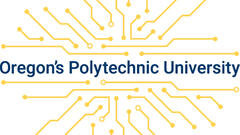Program Accreditation
The Bachelor of Science in Embedded Systems Engineering Technology program is accredited by the Engineering Technology Accreditation Commission of ABET, https://www.abet.org.
ABET is a specialized accrediting board recognized by the Council for Higher Education and/or the Secretary of the U.S. Department of Education.
Required Student Equipment: Successful completion of this degree requires intensive, hands-on use of computers. Therefore, all students are required to own their own computer. To ensure compatibility with campus-wide computers and networks, students should consult a department faculty member for a specification sheet. Financial aid may be available to help defray the cost of this equipment. Please consult the Financial Aid Office at Oregon Tech.
Program Mission
The mission of the Embedded Systems Engineering Technology (ESET) bachelor's degree program within the Computer Systems Engineering Technology (CSET) Department at Oregon Institute of Technology is to prepare our students for productive careers in industry and government by providing an excellent education incorporating industry-relevant, applied laboratory-based instruction in both the theory and application of embedded systems engineering technology. Our focus is educating students to meet the growing workforce demand in Oregon and elsewhere for graduates prepared in both hardware and software aspects of embedded systems. Major components of the ESET program's mission in the CSET Department are:
- To educate a new generation of ESET students to meet current and future industrial challenges and emerging embedded systems engineering technology trends.
- To promote a sense of scholarship, leadership, and professional service among our graduates.
- To enable our students to create, develop, apply, and disseminate knowledge within the embedded systems development environment.
- To expose our students to cross-disciplinary educational programs.
- To provide government and high tech industry employers with graduates in embedded systems engineering and related professions.
Program Educational Objectives
The Program Educational Objectives reflect those attributes a student of the ESET program will practice in professional endeavors.
- Graduates of the ESET program are expected to understand the societal impact of embedded systems and technological solutions.
- Graduates of the ESET program are expected to do hardware/software co-design for embedded systems. Graduates will continue to develop skills in analysis, approach, optimization, and implementation of embedded systems.
- Graduates of the ESET program are expected to obtain the knowledge, skills and capabilities necessary for immediate employment in embedded systems.
- Graduates of the ESET program are expected to participate in life-long learning to be able to adapt to a changing environment.
Program Student Learning Outcomes
- An ability to apply knowledge, techniques, skills, and modern tools of mathematics, science, engineering, and technology to solve broadly-defined engineering problems appropriate to the discipline.
- An ability to design systems, components, or processes meeting specified needs for broadly-defined engineering problems appropriate to the discipline.
- An ability to apply written, oral, and graphical communication in broadly-defined technical and non-technical environments; and an ability to identify and use appropriate technical literature.
- An ability to conduct standard tests, measurements, and experiments and to analyze and interpret the results to improve processes.
- An ability to function effectively as a member as well as a leader on technical teams.
Program Student Learning Outcomes Update
On September 18, 2019, the ESET and CET faculty met to review and approve changes to the mission statement, and program student learning outcomes. The ABET ETAC a-k were updated to reflect changes to ABET ETAC 1-5 as of the 2019-2020 cycle. These changes were discussed in the Fall 2019 Industry Advisory Board.
Summary of Student Learning Outcomes
The Embedded Systems Engineering Technology faculty formally assess the student learning outcomes which is summarized in the annual program assessment report. Additional details can be found in department assessment records.
Program Curriculum Map
The curriculum map for the Embedded Systems Technology program can be found on the catalog web page on the Oregon Tech website, www.oit.edu/catalog.






